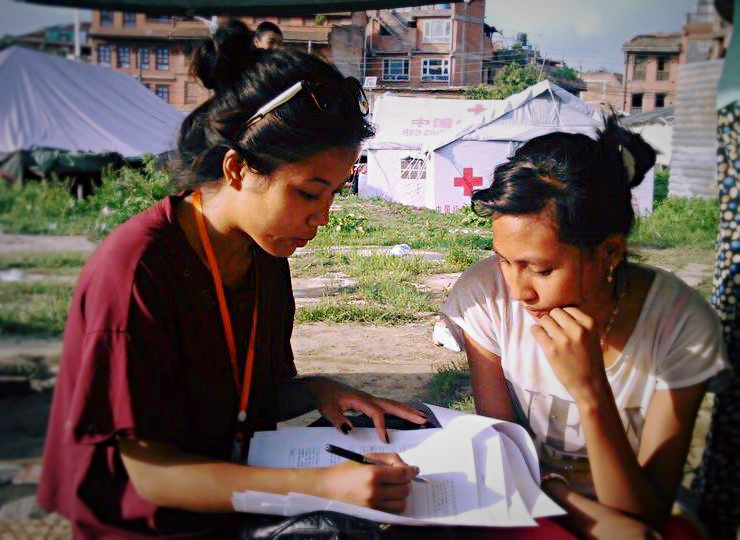Kathmandu, Nepal – Pasang Sherpa never dreamt of how her life would change after April 25, 2015 – the day a 7.8 magnitude earthquake devastated her homeland, Nepal.
The quake killed almost 9000 people, destroyed hundreds of thousands of homes and wiped out the majority of health facilities in the hardest-hit areas. But it couldn’t shake the young woman's drive to help others.
So Pasang Sherpa signed up to train as a youth peer educator on sexual and reproductive health and rights, and headed out to help and educate young persons who were victims of the quake.
"Some of them living in tents were mentally and emotionally weak. So we were in a dilemma about how and where to start,” she recalls. “At first, they felt so shy to listen to the information we were imparting. But we developed trust, mutual respect and understanding. We shared the space with them, listened to their stories of pain, and often ate meals together, so they gradually overcame their shyness and opened up."

A young peer-educator talks sexual and reproductive health with an earthquake victim. Photo: Y-Peer Nepal
Aimed at quake victims between 19 to 24 years old, the sessions offered information on adolescent pregnancy, unsafe abortion, menstrual hygiene, sexually transmitted infections and gender-based violence, explained Pranita Shakya, another youth peer educator.
Guidance on where to access safe and effective contraception was also given, and key life skills were shared to help manage and recover from post-quake stress and trauma.
As youth peer educators like Pasang Sherpa trained others to help spread the word, over 490 volunteers were eventually trained through the six-month project that was run by the youth agencies Y-PEER Nepal, Yuwa and Yuwalaya, with support from the international youth NGO Restless Development and UNFPA, the United Nations Population Fund.
In the Kathmandu Valley alone, 720 information sessions were imparted at more than 50 schools and 16 camps for the displaced. Overall, over 19,000 young people districts gained vital sexual and reproductive health information.
“I didn’t know women and young people have the right to decide freely on matters related to their sexuality – and that sexual and reproductive rights are basic human rights,” says Barun Kuinkel, who joined a session after losing his home in the quake. “The session [the peer educators] organized helped me learn that, and I’ll share the knowledge I’ve gained with others.”
“It's hugely encouraging to see some great achievements brought about by the work of young people for other young people,” said Giulia Vallese, UNFPA Nepal Representative, at an event to round-off the project and honour the peer educators.“We’re now looking at documenting this experience and capturing the richness of the lessons we’ve learned to create a manual to guide future peer-educators, and to push the project out to other parts of the country.”
Boosting access to vital sexual and reproductive health services and information is a key element in UNFPA’s efforts help Nepal meet its post-quake humanitarian needs and secure a lasting recovery, along with working to end gender-based violence, providing safe spaces for women and empowering young people – those affected by the disaster as well as those assisting in the response to it.
An education session on sexual and reproductive health at a school in the Kathmandu Valley. Photo: Y-Peer Nepal


